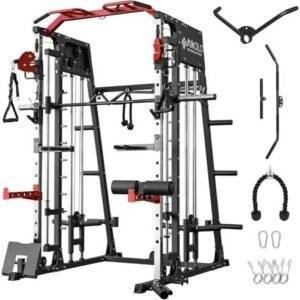In a world where sedentary lifestyles have become the norm, the importance of cardiovascular exercise cannot be overstated. As one of the most effective ways to enhance heart health, aerobic activities such as running, cycling, and swimming offer a myriad of benefits that extend beyond mere physical fitness. Regular cardiovascular exercise not only strengthens the heart, improving its efficiency and circulation, but also plays a critical role in reducing the risk of chronic diseases, managing weight, and enhancing overall well-being. In this article, we’ll explore the science behind cardiovascular exercise and outline actionable strategies to seamlessly incorporate it into your daily routine. Join us as we delve into how unlocking the benefits of cardiovascular exercise can pave the way for a healthier heart and a more vibrant life.
Table of Contents
- The Importance of Cardiovascular Exercise for a Healthy Heart
- Understanding the Various Types of Cardiovascular Activities
- Strategies to Incorporate Cardio into Your Daily Routine
- Monitoring Progress and Setting Goals for Heart Health Success
- Key Takeaways
The Importance of Cardiovascular Exercise for a Healthy Heart
Engaging in regular cardiovascular exercise is essential for maintaining a strong, healthy heart. This form of physical activity raises your heart rate, promoting improved blood circulation and oxygen flow throughout the body. Some of the key benefits include:
- Improved Heart Efficiency: Strengthens the heart muscle, enabling it to pump blood more effectively.
- Lower Blood Pressure: Helps to reduce hypertension, reducing the risk of stroke and heart disease.
- Weight Management: Aids in burning calories, contributing to weight loss or maintenance.
- Increased Endurance: Enhances stamina, making daily activities easier and more enjoyable.
Moreover, cardiovascular exercise plays a critical role in overall health and well-being. Regular sessions can enhance mental health by releasing endorphins, which help alleviate stress and reduce symptoms of anxiety and depression. Consider incorporating diverse activities into your routine for greater enjoyment and motivation:
| Activity | Duration (minutes) | Calories Burned |
|---|---|---|
| Jogging | 30 | 300 |
| Cycling | 30 | 250 |
| Swimming | 30 | 350 |
| Walking | 30 | 150 |
Understanding the Various Types of Cardiovascular Activities
Cardiovascular activities can be categorized into various types, each offering unique benefits and catering to different fitness levels and preferences. Aerobic exercises, such as running, swimming, and cycling, elevate your heart rate and enhance blood circulation, contributing to improved heart health. High-intensity interval training (HIIT), on the other hand, incorporates short bursts of intense activity followed by rest, optimizing fat burning and cardiovascular endurance in a shorter timeframe. For those looking for gentler alternatives, low-impact activities like brisk walking, elliptical training, or swimming help minimize strain on the joints while still delivering heart-healthy benefits.
Incorporating strength training into your routine may also bolster cardiovascular health. By building muscle, you increase your resting metabolic rate, which can result in lower body fat percentages. Additionally, flexibility and balance exercises, such as yoga and Pilates, can aid in overall fitness and reduce the risk of injuries, making it easier to engage in more intense cardiovascular activities. Below is a table summarizing these types of cardiovascular activities and their corresponding benefits:
| Activity Type | Benefits |
|---|---|
| Aerobic Exercises | Improves endurance, boosts heart health |
| HIIT | Maximizes calorie burn, saves time |
| Low-Impact Activities | Gentle on joints, good for beginners |
| Strength Training | Increases muscle mass, boosts metabolism |
| Flexibility & Balance | Reduces injury risk, enhances mobility |
Strategies to Incorporate Cardio into Your Daily Routine
Incorporating cardiovascular exercise into your everyday life doesn’t have to be a daunting task. By making small adjustments to your routine, you can seamlessly integrate cardio without requiring extensive time or equipment. Start your day with a brisk morning walk or cycle to work instead of driving. You can also take advantage of your lunch break by opting for a short jog or a fast-paced walk in a nearby park. The key is to view these activities as enjoyable breaks that enhance your productivity rather than tedious chores.
To further engage in cardiovascular activities, consider the following strategies:
- Join a local sports team: Whether it’s basketball, soccer, or a running club, playing with others adds fun and accountability.
- Dance it out: Sign up for a dance class or simply have a dance party in your living room.
- Use tech to your advantage: Fitness apps and wearables can help you track your cardio workouts, making it easier to set and achieve goals.
- Incorporate intervals: Try interval training during your regular workouts. Alternate between high and low-intensity exercises for an effective cardio burn in less time.
Monitoring Progress and Setting Goals for Heart Health Success
Establishing clear and achievable goals is vital for anyone looking to enhance their heart fitness through cardiovascular exercise. By setting both short-term and long-term objectives, you can create a roadmap to success. Start with attainable milestones such as:
- Daily Steps: Aim for a certain number of steps or active minutes each day.
- Workout Frequency: Gradually increase the number of cardiovascular workouts per week.
- Intensity Levels: Incorporate various intensity ranges during your exercise sessions.
Additionally, tracking your progress is essential. Utilize wearable devices or apps that monitor heart rate, calories burned, and overall fitness levels. Regular assessments can help you stay motivated and evaluate whether you are on the right track. Consider organizing your progress data in a table to see changes over time:
| Date | Heart Rate | Minutes of Cardio | Steps Taken |
|---|---|---|---|
| 01/01/2023 | 120 bpm | 30 | 5,000 |
| 01/15/2023 | 115 bpm | 45 | 6,500 |
| 01/31/2023 | 110 bpm | 60 | 8,000 |
Key Takeaways
incorporating cardiovascular exercise into your daily routine is one of the most effective ways to enhance your heart health and overall well-being. From improving circulation and lowering blood pressure to boosting your mood and increasing your lifespan, the benefits are profound and far-reaching.
As you consider your fitness regimen, remember that consistency is key. Whether you opt for brisk walking, cycling, swimming, or any other cardio activity you enjoy, the important part is to stay active and make it a habit. Set realistic goals, listen to your body, and over time, you’ll likely notice significant improvements in both your physical and mental health.
Embracing cardiovascular exercise isn’t just about preventing heart disease; it’s about enriching your life and enjoying every heartbeat. So, lace up those sneakers, find a workout buddy, and make a commitment to prioritize your heart health today. After all, a healthy heart is a happy heart, and there’s no better time than now to invest in your future. Here’s to a stronger, healthier you!





